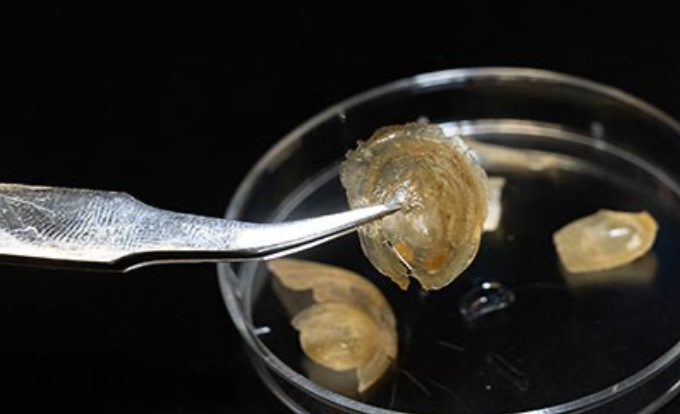By Alka Singh
Switzerland, Sep 16: An international research team has revealed the secret of why the protective cover of the brachiopod, Discinisca tenuis becomes extremely soft and foldable in water and gets hard and stiff again in the air. The brachiopods are found mostly in the west coast of Africa. The researchers found that the brachiopod’s shell was made of inorganic minerals in which organic polymers made from proteins and sugars were embedded. Bones, clam shells, and teeth are of similar structures. The main mineral component found was a type of fluoroapatite (a phosphate mineral), which is also found in the enamel of our teeth.
The nanocrystals of this mineral are arranged in layers like brick walls. They are the bricks and the mortar that consists of organic molecules such as chitin and proteins which can absorb large amounts of water. Water here provides lubrication between the nanocrystals making them move easily. So, the shell becomes soft and flexible. There exist numerous pores on the shell. If it loses water, it becomes hard again. This prevents the shell from damaging and help in the animal’s survival.

Image Credits: Brookhaven National Laboratory

